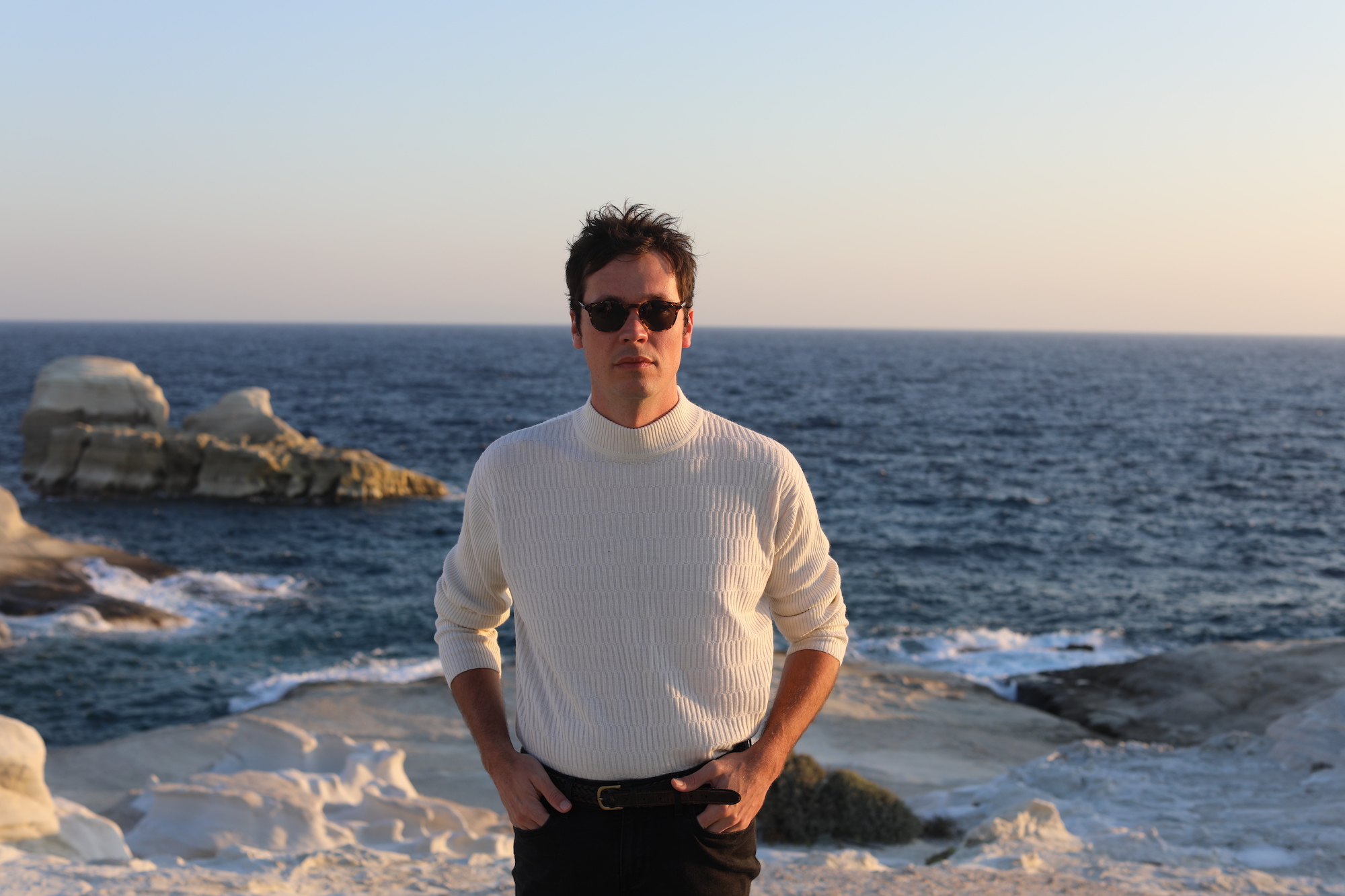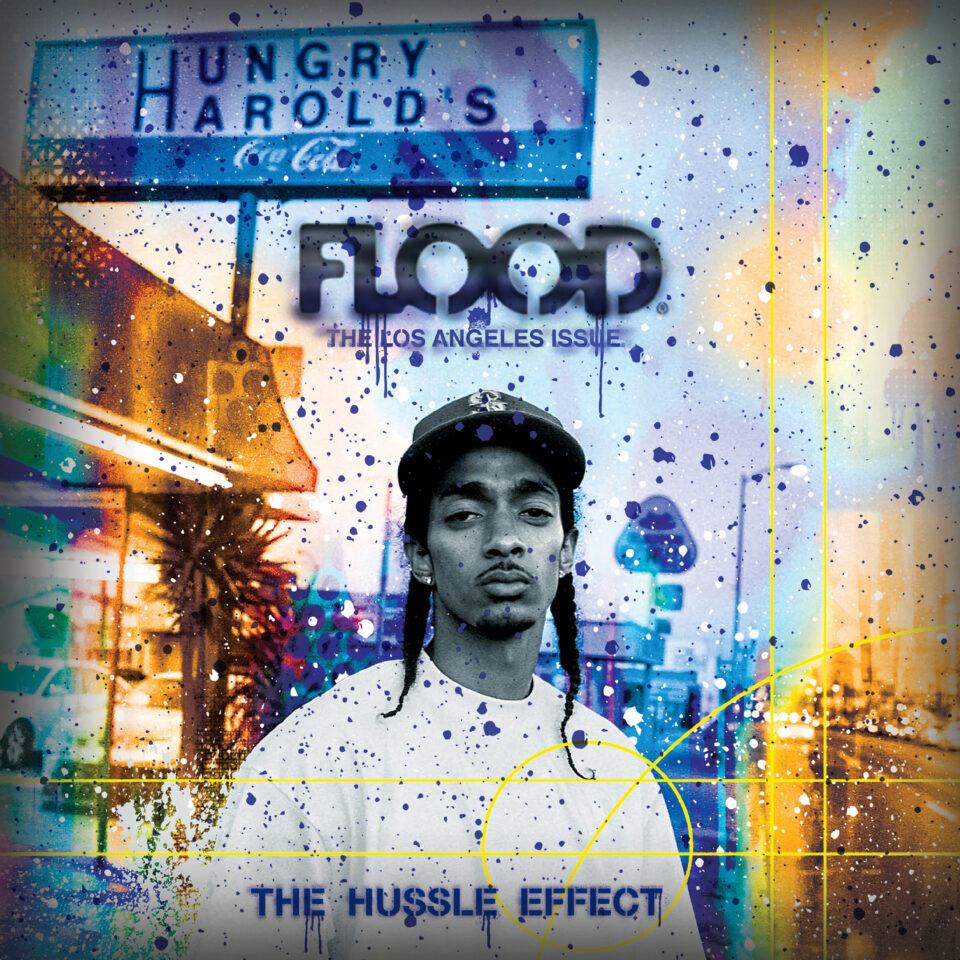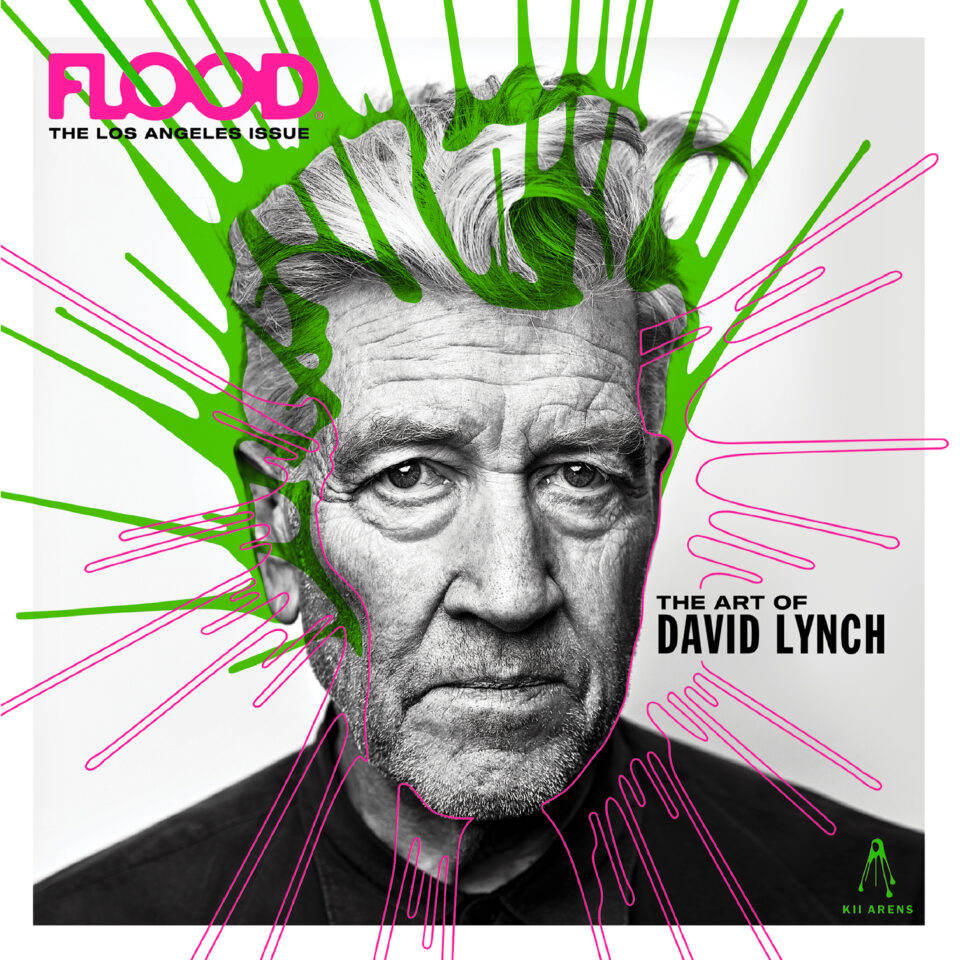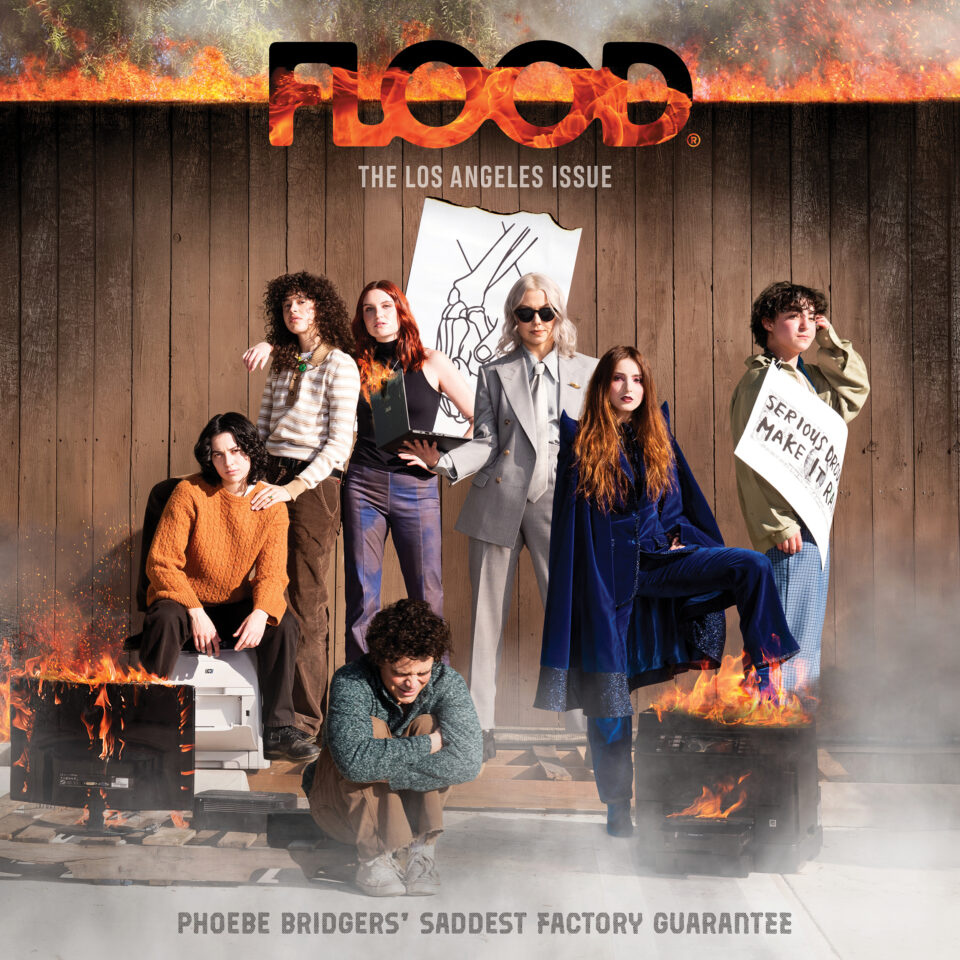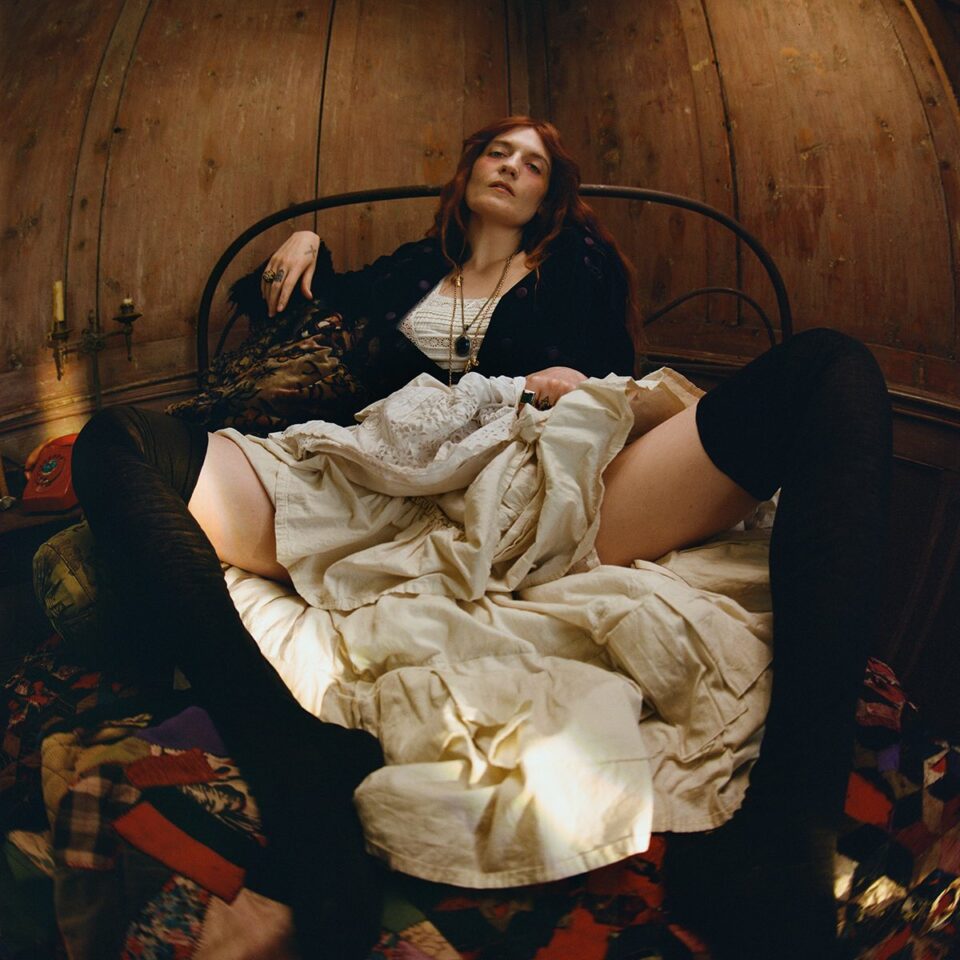Ernest Weatherly Greene Jr., better known as Washed Out, has embraced a subtle brand of homespun Georgian electropop—the avatar of chillwave—since his start in 2009, before the bruised emotionalism of his 2011 debut LP Within and Without and its icy follow-up, Paracosm.
What does Greene’s Washed Out do for an encore where such elusively hairsplitting and abstruse songcraft is concerned? Make something deliciously bold and brassily ’80s-ish with Purple Noon, his fourth album that finds him returning to Sub Pop after a sojourn with Stones Throw, and pushes him into an oddly obvious (but no less snakey) brand of emotional lyricism and simmering moodswing musicality.
We caught up with Ernest at his home in Georgia to discuss all things purplish.
Aspects of this record seem to poke backwards to your earliest music, from your re-signing with Sub Pop to the fact that on “Time to Walk Away” you sing, “I just wanna go back, start it all again.” Was there something recently that made you stop and want to reel it all back a bit?
Yeah, I don’t believe I was consciously thinking that in particular. But while putting the record together, I found that happening quite naturally. Every record I do is a slightly different take on the Washed Out formula. The last one was very sample-based, done in a collage style. So I knew I didn’t want to do that again. It was a return to more traditional recording and songwriting. Writing on actual instruments. It was also scratching a creative itch—I have never worked in that style before. That felt fresh and exciting.
Are you talking about the feel for ’80s balladry—slow songs, big production value, the sense of the cinematic and epic—that Purple Noon embraces?
Yes. And that was a very conscious move, for sure. It’s hard to distinguish exactly what I was attracted to at first about that sound. There were certainly songs that were lush that came down to the production and studio technology of the day. That meant moving from twenty-four tracks to sixty-four tracks; the capability was there, and the sound was plush and powerful. That was an influence, as was the “power ballad” ideal. People then were not afraid to truly…
“That’s always the hardest thing—nailing down an aesthetic that will be worthwhile to put my heart and soul into for the next three or four years of recording, releasing, and touring. Other than that, it’s smooth sailing.”
Go for it?
Yes, get in there and emote. I was thinking about the very real emotion of the music and the lyrics and the relationship between them. Of course, I wanted to bring some of that into the modern era, and have it sound like a Washed Out record. I was thinking of “Drive” by The Cars a lot—I always loved the sound and the tempo of that song. The type of stories I wanted to tell on this record just sounded as if they would work in that style.
Did you write for this style, or did this style suit where you were going?
This was the very first album of mine where I had a clear picture of what a full album would be, what a full album’s feel would be. That never happens. It’s normally rough ideas taking shape, then I’m halfway through recording before an actual palate of sound takes shape over everything. The first song that I started for this cycle was “Face Up,” which I was commissioned to write for Adult Swim—they were releasing a compilation. I had a deadline, it was very different from how I usually work. I did that pretty fast. I liked the feel of that, touched on some sounds I had used in the past, but was very forward moving.
The next thing I wondered was how do I make a whole album in this style and keep it varied. I’m old school. I like the album-making process, thinking of the ebb-and-flow, that you’re going on a journey. I had the mood and setting, I just needed to write and record the songs. That’s always the hardest thing—nailing down an aesthetic that will be worthwhile to put my heart and soul into for the next three or four years of recording, releasing, and touring. Other than that, it’s smooth sailing.

Adult Swim commission included, you’ve been writing for, and with, other artists beyond your Washed Out project, including Sudan Archives. What can you tell me about how and why that occurred, and how it has changed your outlook?
It’s been a nice shift from my usual process. I was always scared, before that, of doing the typical shared LA writing session—the traditional thing where two people are in a room, forced to come up with something. Maybe get a song out of it. Considering what I said earlier, that it could take two or three years to come up with a set of songs, writing with another person didn’t seem forthcoming.
Thinking you could get together with another person and guarantee that one song or more would come from such a session probably seemed improbable.
Yeah, it always seemed intimidating. Then an interesting thing happened inside me where I realized that I would be bringing something unique to the table, and that another artist—such as Sudan—would be bringing theirs.
That sounds like a self-confidence exercise. You got out of your shell.
Yeah, you’re meeting in the middle where interesting and unpredictable things could happen. That’s just what played out between she and I. Specifically, it meant being able to use sound and even more modern rap and R&B, something that I never felt was appropriate for me. That was really fun, and I realized really quickly that yes, I can still do me and use an entirely new set of tools. I ended up using some 808 State sounds that wound up on my new record, maybe some shiny, synthetic drum sounds that I never used before. That came directly from working with Sudan and her influence.
“I ended up using some 808 State sounds that wound up on my new record, maybe some shiny, synthetic drum sounds that I never used before. That came directly from working with Sudan Archives and her influence.”
How did you and Sudan wind up writing and recording together in the first place? Do you see yourself doing additional likeminded collabs?
I have been asked a number of times to write with other artists, but I just never felt comfortable with it. I guess I have found some confidence in the past few years. I had finally done enough with my records where I could step into someone else’s world and hold my own. Sudan and I have mutual friends. My last album before this was on Stones Throw. She’s on Stones Throw. I was spending time in LA working on Washed Out’s Mister Mellow record. We just met up one day there, at her studio. Didn’t really write; we just hung out. She sent me some stuff she was working on, some rough demos, rough sketches that I filled out with music more my style.
It ended up getting into a number of people’s hands after that, which was interesting to see. The finished product pulled away from much of what I had done, but also kept some of it. I’m quite precious with my own material, so this was another new experience: having someone come in and cannibalize what I had done, but with a nice balance. She made it a much better song. And I’d love to continue doing this. I’m way more open-minded to the experience, but would still need to be confident that I could bring something to the table. I think it all starts with me being a fan of the artist before even getting in a room and figuring out what could work. I think if I wasn’t a fan, it could lead to a frustrating experience.
What was the song that appears on Purple Noon that you worked on earliest in the writing and recording process that may have guided or defined the rest of the album?
“Face Up” was the earliest one. It had that ’80s ballad influence that much of the album has. That said, I didn’t want to put out an album of just twelve ballads. I wanted a variation, so “Too Late” changed the mood, was something more uptempo. It was a real victory finishing this album once those songs came in. I have this real fear of being able to shape an album. There’s catchy songs. There’s production touches I haven’t used before. There are songs where the chorus is the most important aspect of the song. That’s new for me, and definitely inspired by new pop.
Like what?
It’s funny, I don’t follow modern pop. And I don’t know the guy’s name. The song is really cheesy…Charlie Puth. He’s annoying, but, from a pop songwriting level, he gets your attention.
How does the film Purple Noon influence your album? How does one encapsulate or influence the other or recognize a similar vibe?
“I pretty much feel as if I’m scoring an imaginary film when I’m making an album. That helps to build a picture in my mind so I can write more clearly.”
I saw the ’90s Ripley film with Matt Damon and Jude Law, and loved that—the story was great, but I was even more attracted to its setting and its styling. It got my imagination going. I put myself into the characters’ shoes, that era. That started to influence the mental image of what I was creating with the songs on this album. I pretty much feel as if I’m scoring an imaginary film when I’m making an album. That helps to build a picture in my mind so I can write more clearly.
I pictured a setting—not unlike what was happening in Purple Noon—and just let the characters come to life; fabulously wealthy, incredibly good looking. The associations I get from the title alone…this record just felt “purple” to me. Another big influence on Purple Noon was Sade records. Her albums make me feel as if I am in a very posh, European beach resort. I was trying to channel that as well.
How does your Master of Library and Information Science degree apply to what you do as an artist on Purple Noon?
It all comes down to research. When I was researching the 1960 film, I found that its title comes from a poem by the Romantic poet Percy Bysshe Shelley. The story of that poem was very much in league with what I was talking about on the album, that classically romantic protagonist, the brooder who idealizes a world, sits on the coast of Italy, and feels like he should be inspired by the scenery, but is frustrated. He can’t quite figure out why the sunsets aren’t inspiring him. I really dig into researching my projects. As I’ve gotten older I find that even the smallest detail can be helpful. I live near Emory University in Atlanta and used their library to find photos of that time—the fashions and looks of that era, shots of the region. It went quite deep. FL

